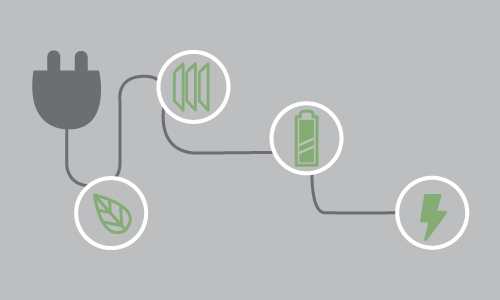Maintaining an efficient operation is one of the most important aspects of running a successful factory or manufacturing facility. While there are many individual pieces of machinery that can contribute to your process, you also have to make sure they are all working at peak efficiency.
One of the best ways to make sure your factory is running at its max potential is installing an energy recovery system. As the name indicates, these devices can be incorporated into high temperature-emitting machines in order to collect the heat that is usually released into the atmosphere.
Besides reducing the amount of wasted heat, energy recovery systems can also make up for lost energy in multiple stages of your operation. In this article, we’ll discuss the types of energy recovery systems, talk about their benefits, and highlight some common sources of inefficiencies found today.
Common Sources of Inefficiencies
Before going into the types of recovery systems and their benefits, let’s look at some of the most common sources of wasted energy.
Standby Power Requirements
Despite the fact that most managers focus on the performance of their machines, they should also be assessing their standby power requirements. Large machines usually draw a certain amount of power while idle, so make sure you take this into consideration when looking for the most efficient setup.
Air Leaks
Air leaks are a common phenomenon that can affect residential, commercial, and even industrial buildings. And, as a general rule of thumb, bigger buildings with different components and access points have higher chances air infiltration. Air leaks from compressed air lines also add an unnecessary energy consumption and reduced lifespan to the compressors themselves.
Oversized Motors
Even though new manufacturing and production processes are being modernized at a fast pace, there are many facilities that have used the same equipment for decades. As production becomes leaner and more precise, these oversized motors are underloaded, resulting in an unnecessary use of energy.
Keep in mind that both the EPA and the U.S. Department of Energy have published educational material with the aim of helping manufacturers abide by their regulations.
Types of Energy Recovery Systems
There are many energy recovery systems available, each suitable for a slightly different purpose. These use energy that is released into the atmosphere or simply wasted, and come in three main designs:
Air-to-Air
These recovery systems are ideal to collect energy from your factory’s exhaust stack. The collected heat can be used to control the internal temperature of your facilities or to aid one or more parts of your process.
Air-to-Liquid
Air-to-liquid recovery systems are also designed to collect heat from the exhaust stack. However, they then use the energy to provide glycol, hot thermal oil, or to heat up water that is then used in the facility.
Air-to-Waste Heat Boiler
If your facility uses steam for any reason, an Air-to-waste heat boiler energy recovery system allows you to supplement your steam-production capacity and only use your main generator as a backup.
Benefits of Energy Recovery Systems for Your Factory
Incorporating an energy recovery system in your facility may require an initial investment, but it helps you reduce operating costs in the long run. At the same time, these systems can also improve individual areas of your operation.
Some of the benefits of installing an energy recovery system include, but are not limited to:
- Reduce operating cost
- Limit wear and tear your machinery suffers
- Use recovered energy for plant operations
- Decrease carbon dioxide and VOC emissions
- Reduced heating/cooling costs
Get a Custom Energy Recovery System for Your Facility Today
Finding a reliable manufacturer that can produce a tailored energy recovery system is critical to the success of your project. At The CMM Group, we specialize in designing efficient custom energy recovery systems that are built to last.
Get in touch with us by giving us a call or filling out our online contact form. Contact us today!
Sources:




